Market Update – The Crazy Vintage Chronographs
“Sell crazy someplace else, we’re all stocked up here.” – says Melvin Udall, Jack Nicholson’s character in the movie As Good as it Gets.
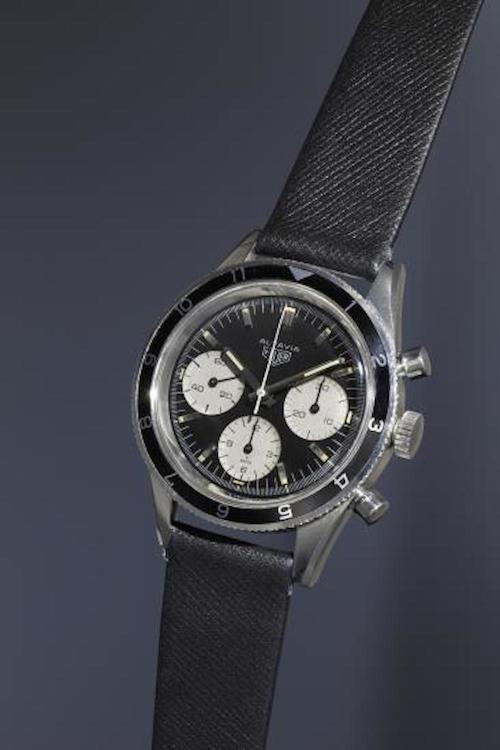
The Heuer Autavia sold at Phillips for 75,000 CHF (photo credit: www.phillips.com)
The line above could easily explain the current market for vintage chronographs. As I sat down on the couch with, fittingly, a glass of champagne (this was pure happenstance as we had a friend in town – I normally prefer my bubbly to consist of malted hops and barley) one evening in mid-May, I decided to tune into the Phillips Stop-Start-Reset auction featuring 88 vintage stainless steel chronographs. I watched a number of pieces sell at very strong prices, but it wasn’t until the team came to a moderate example of a Heuer 2446 3rd execution Autavia that was erroneously referred to as a Jochen Rindt (the piece had an hours bezel, which is fine and desirable, but it did not contain the minutes insert that is linked to the former World Champion’s name) that I truly sat up and watched. After a heavy run-up, the piece seemed to putter out and then, the Heuer suddenly picked up steam and cracked 30,000 CHF and then – it just kept going. In fact, it went all the way to 75,000 CHF with commission.
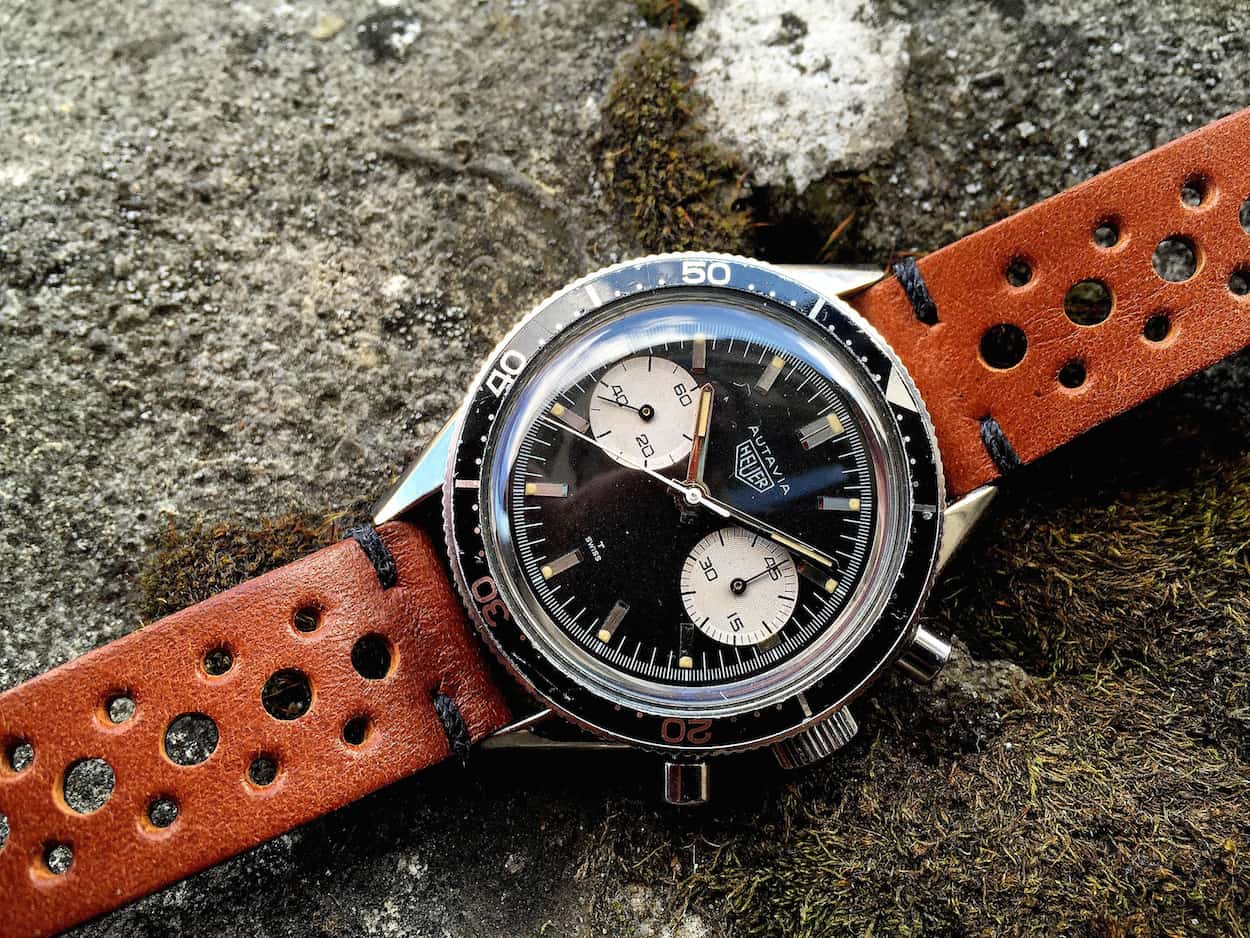
An example of a Heuer 3646 Andretti (photo credit: @watchfred)
Auctions are Barometers…
Juxtapose this scenario with what just occurred at Christie’s in early June when a similar, albeit two register, Heuer 3646 3rd execution Autavia “Mario Andretti” hit the block and sold for roughly $13,000. Admittedly, two register pieces sell for less than their triple register counterparts, but not for 75-80% less. So, in taking a look at just these two examples, what the hell happened here? Shenanigans, tulips, egos, or a mix of everything perhaps? I mean, within the span of a few short weeks, how could the everyday collector go from dreaming about wearing flip-flops and an “I’m With Stupid” t-shirt into work the following Monday to questioning whether they should have invested in something inane like equities versus vintage watches? How dare that crew from Phillips give hope to all out there with faded vintage chronographs on stylish, handcrafted straps! Well, folks, let’s talk about this because, guess what, not all is lost.

Philipps sold vintage Datejusts for big, big money (photo credit: BCatt Watch Straps)
Auctions, in my opinion, are a good market barometer. However, they’re not absolute and they are dramatic, psychological, and filled with emotion. And when it comes to drama, what we are seeing by looking at past results is that no one really puts on a show quite like Phillips. Seemingly, the company knows how to hype and promote an auction like few others and their focus on specific subjects seems to be working very well. This, in my opinion, aids the results dramatically and one can only look on and say “job well done” when the figures tally. Take, for instance, the Phillips Datejust auction. For sure, the DJ is an iconic watch but the reality is that aside from some early pieces, those worn by dignitaries and some rarities, this is a watch that flies by most because they’re everywhere. They’re not exactly sports watches and they’re more like dress watches, but the watches did well at this model-specific auction. Since that time, certain “DJ’s” have gone on to attract more attention, but the bulk of these older correct pieces plod along as nice watches that so many people buy simply because they wish for a nice watch or, in my mind, people want to own a Rolex. There’s nothing wrong with either, but my point is that the Phillips auction of these watches, for the most part, was a “one and done” and I actually feel that the high prices paid for some of the more typical pieces at the chronographs auction were actually related more to a sense of wanting to “get in on the action” and “to come away with something” versus a reflection of actual market prices. Plus, let’s not forget that it was held in Geneva and there just so happens to be a confluence of folks in that area with an awful lot of disposable income.
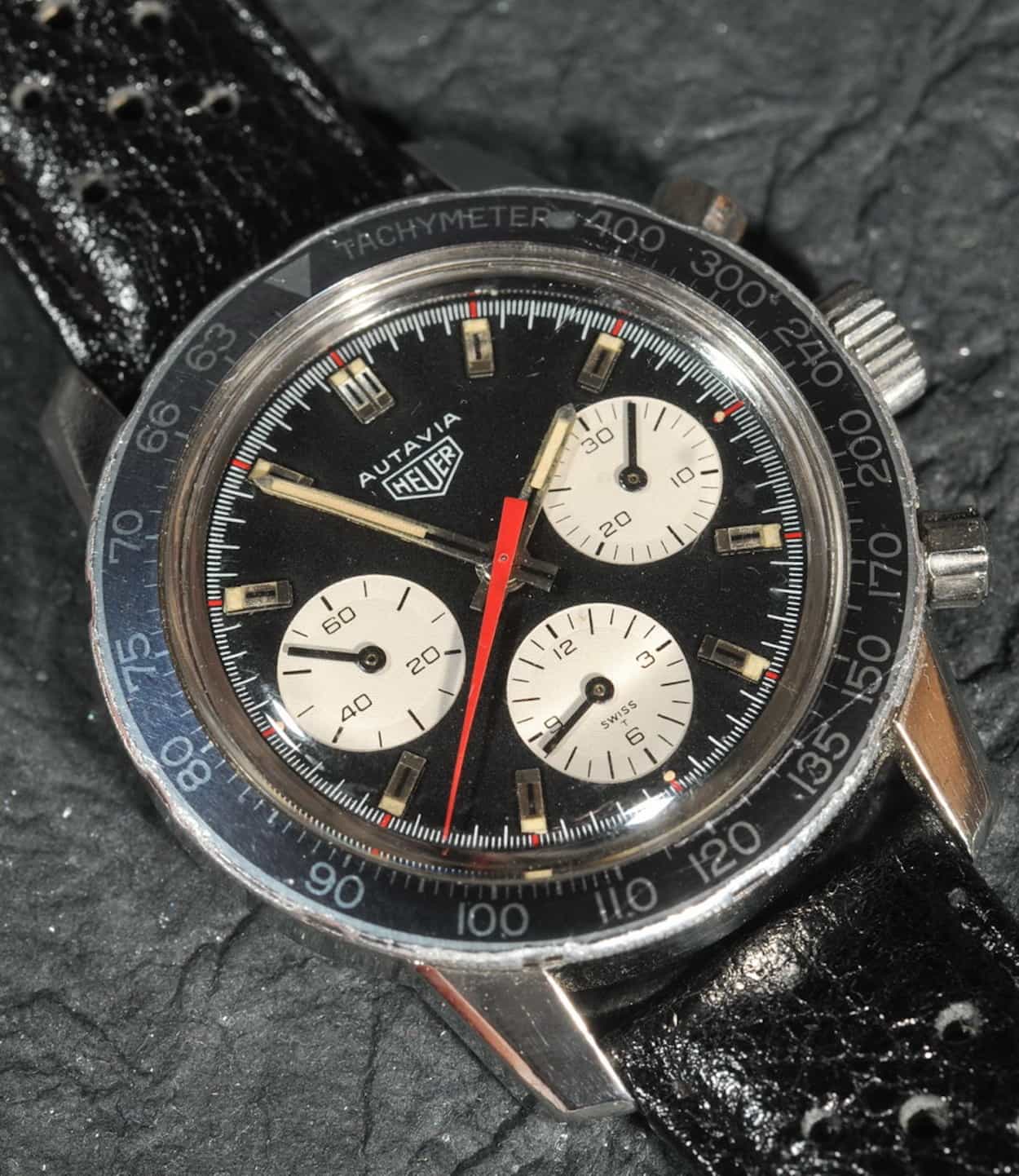
A typical Heuer Autavia 2446C – these aren’t selling for 75K or even half that (Picture courtesy of onthedash.com)
Phillips is on a roll…
Let’s get back to the Phillips auction of vintage chronographs itself because the subject of the auction was in my wheelhouse. At the end of the event, I had very fleeting thoughts of having struck oil with my small collection, but I ultimately took the sale of most of these pieces with a pinch of salt. What I did take from the sale, however, is that vintage chronographs are hot and they can at least now hold their own on the big stage and for this, I thank the Phillips team for legitimizing them alongside other watches that don’t interest me nearly as much. But, if you’re still on the fence and thinking that you have mined gold and feel that 2446 Heuers are suddenly worth $70K (or even half that), this can be checked. The day prior to the event, 2-3 Heuer 2446C’s were on eBay for $10-13K and they were still sitting there the next day. No, they weren’t the same exact watches and the condition on these pieces (they’re still there) are mediocre at best, but wouldn’t you think that if $70K were the new standard that $13K would be a no-brainer for a relatively similar watch? Exactly…
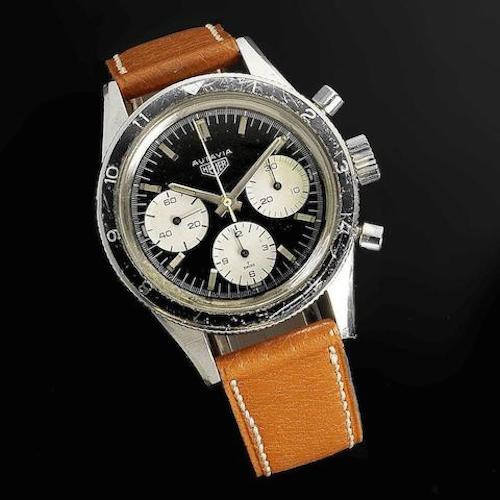
The Heuer 2446H sold by Bonhams on June 22, 2016 for roughly $30,000 (photo credit: bonhams.com)
Christie’s – not as dramatic but still impressive
Returning to the Christie’s auction from early June, many have called this auction a true reflection of the market, and just as many are saying that with heads drooping and mist in their eyes. Now, before you go heaving your chronographs into a wheelbarrow in trade for a measly loaf of bread, please consider something. I’ll bring up the Autavia again. The fact that a 3646 Heuer “Andretti” sold for roughly $13K is a damn good result. A little more than a year ago – maybe 18 months ago -, this was a $3500 watch on a good day. I don’t know about you, but I consider that a pretty healthy increase and while $13K might even be a little strong, I’d bet that this watch could truly command $10K all day long and it should steadily rise. In fact, there are some notable Heuer sellers out there who obtain these types of pieces on a regular basis and they are normally gone within a day of posting. Oh, and wait, since I am using Autavias as the basis of this article, a 2446H auctioned yesterday (June 22nd) at Bonhams in London for roughly $30,000. It had the wrong crown and was quite well worn. So where does this leave us?
Earlier signs of a hot Vintage Chronographs market…
First, a step backwards… It was pretty clear to me back in December 2015 that interest in this subsection of watches – vintage chronographs – was in full bloom when I received an interview request on the topic. Specifically, it was for Luxury Magazine and it featured a number of folks – Eric Wind from Christie’s, Aurel Bacs from Phillips, and others. Granted, a secondary purpose of the article may have been some pre-hype for the auctions that took place over the past month, but I at least consider the questions asked as fair and balanced. Plus, I think that the auctions were a reaction to a growing trend versus trying to force feed something to people where real interest did not lie. Likewise, SalonQP ran a similar article a few weeks prior to the auctions and they asked me similar questions – really about chronographs from the 1960’s and why they are so darn hot right now.
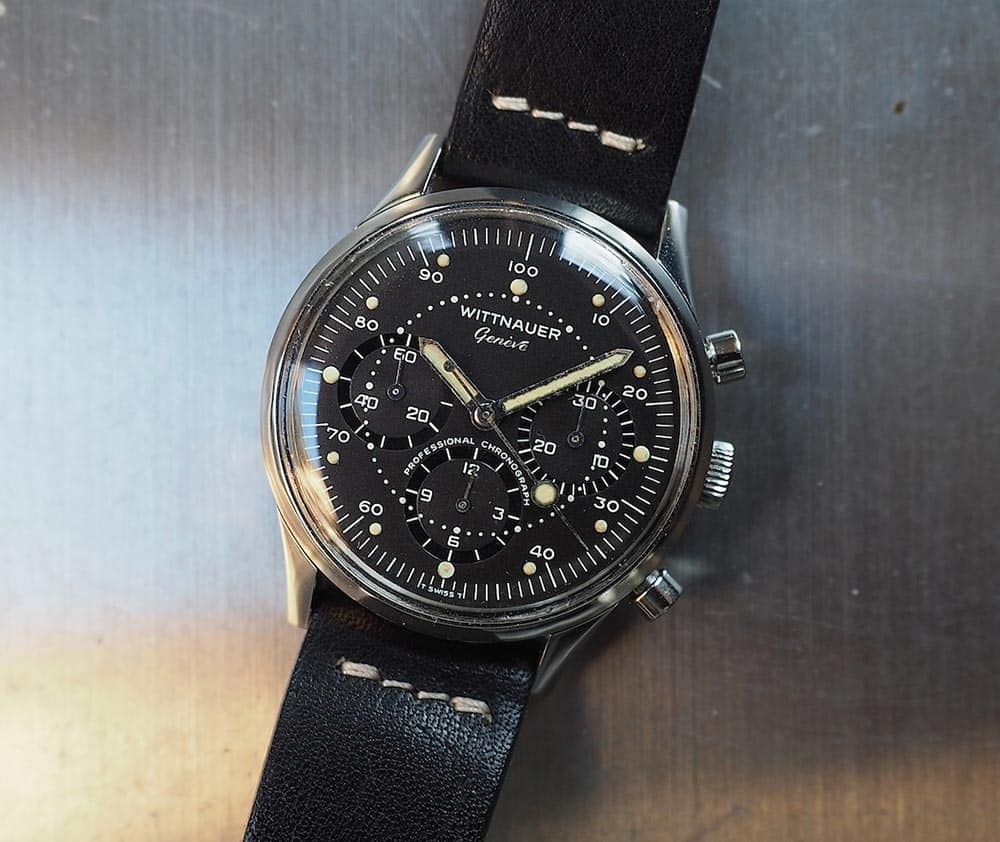
Will this Wittnauer 242T become a top tier piece? Who knows?
Where are we headed?
What will happen going forward? Have we lost our minds and can we soon expect that things will return to a state of normalcy? Maybe we’ll see a leveling off for a period because most landmark models have been exposed, but I have my doubts that a slowdown will last forever. Plus, while we’ve seen brands like Universal Geneve and Heuer slot into price levels only a tier below Rolex, it remains to be seen if other brands grow to this level. Will it be Breitling, Enicar, or others? Or will it be selective models from certain brands such as the Wittnauer 242 (one just sold for roughly $8,500)? We’ll see how the market continues to develop, but as of now I still see stocks of good 1960’s chronographs at all-time low levels and while we have witnessed some “cashing in”, the bulk of people seem to be holding on to their watches. Some may be holding with the thought that prices will continue to climb, but I actually believe most, like myself, enjoy wearing them. After all, I’ve always contended that 1960’s chronographs remain stylistically relevant – with many influencing today’s current models – and they wear well. Also, it shouldn’t be forgotten that despite an increasing market, the lion’s share of vintage chronographs are still reasonable compared to so many new watches. Plus, even if we see a leveling off price-wise, don’t forget that several other markets – art, 1960’s cars – took dips in the past only to roar back with even greater strength. Do I predict this? I’m not sure, but for all the reasons I find these watches much more relevant than, say, pocket watches, I think there’s reason to be bullish in the medium to long-term.
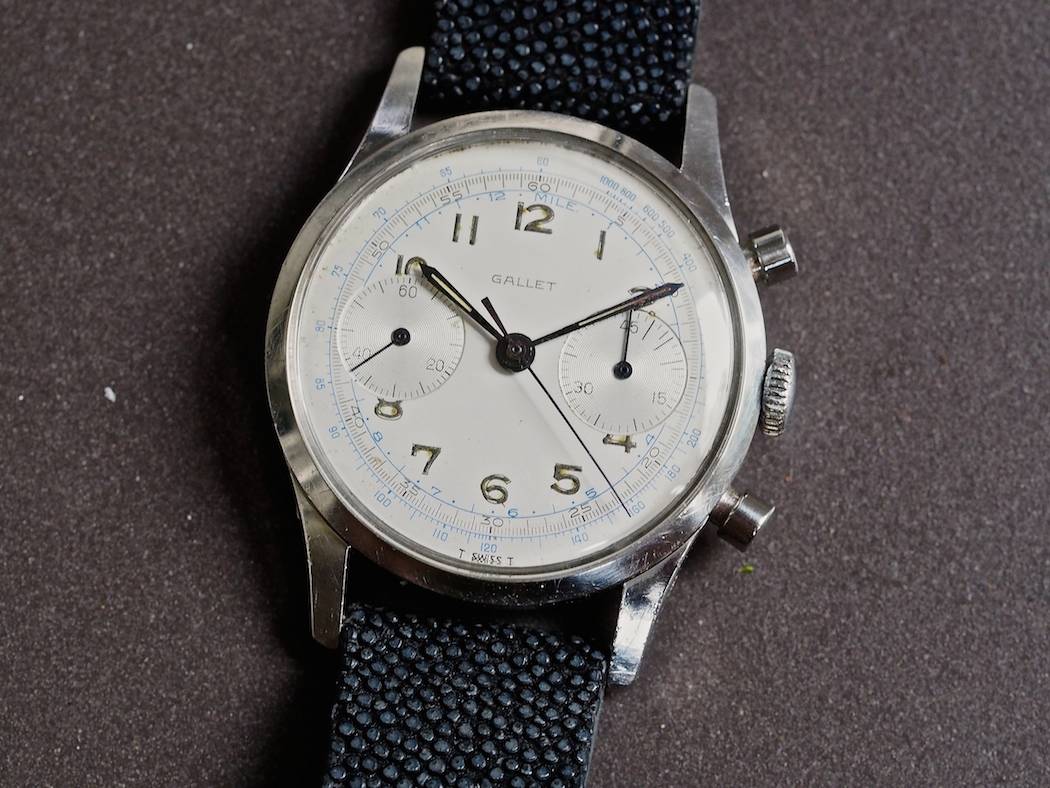
A lovely, still inexpensive, Gallet Multichron 45
Some thoughts on opportunities
When I started these vintage market updates, I previously gave specific recommendations on where to turn for opportunities. Now, when I look back on these suggestions, it seems I was correct. However, I was no Nostradamus; I could have listed about anything related to vintage chronographs and I would have been right because just about everything with a quality mechanical heartbeat from the 1960’s and early 1970’s has become desirable. My best advice is to go out and buy what you like and to buy “good”. Don’t buy junk that’s not correct unless you’re ok with it and never buy something that you don’t love because someone tells you it will become valuable and because it’s rare. I could list buckets of vintage chronographs – some rare – that are valuable that I have little to no interest in, but that should mean nothing to you if you like them. To me, part of the thrill is the hunt and while I get this thrill less and less in crowded and expensive fishing waters, I still enjoy netting a great catch every so often. I’ve also started enjoying what I have more and more versus buying and immediately moving on to the next acquisition. But if you need a few recommendations, I’ll comply…
Finding deals in the vintage chronograph arena is like trying to forage for crops in scorched earth, but there are some last bastions when luck isn’t your only friend.
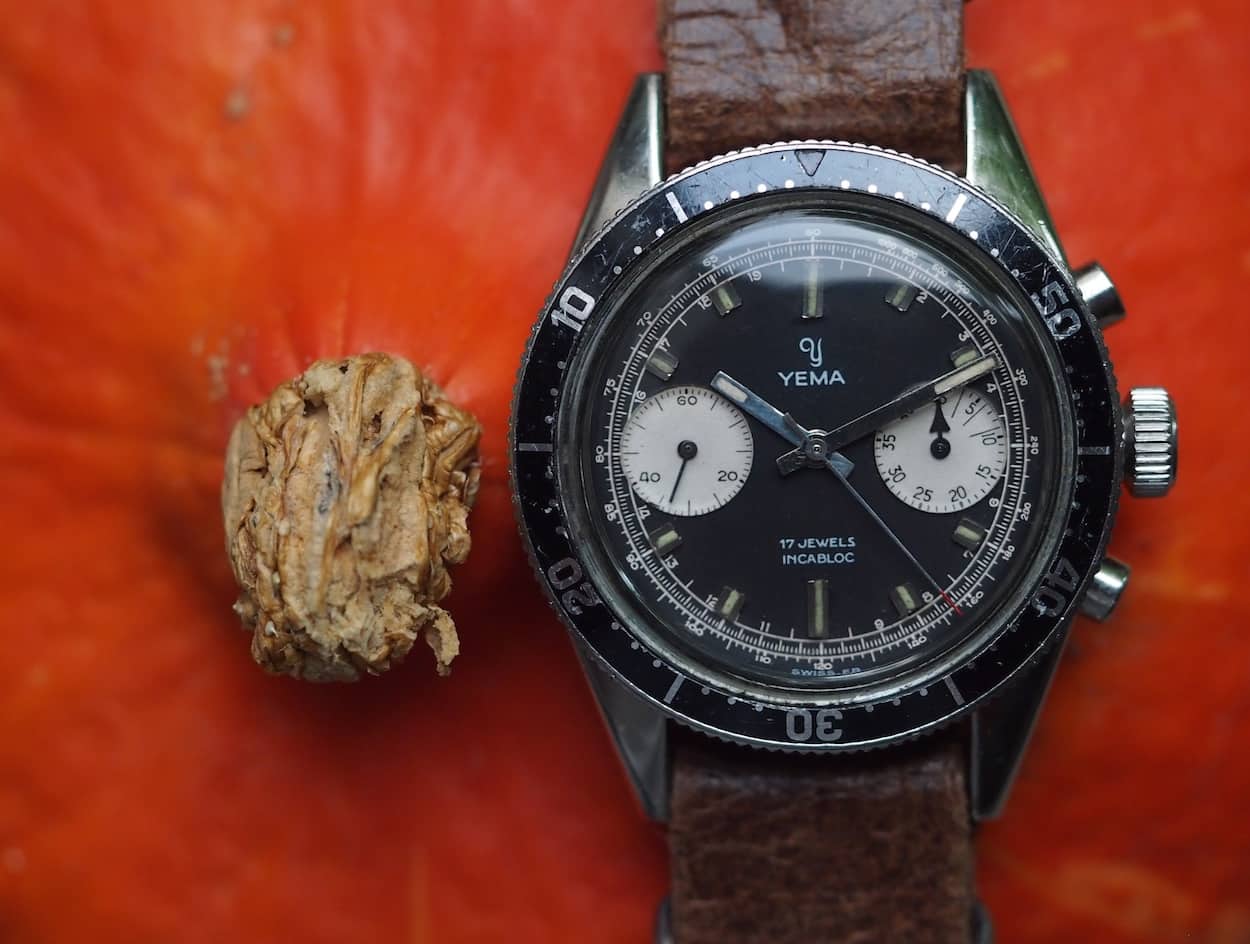
Watches like this Yema Daytona feature robust Valjoux 77xx movements – they’re robust and easy to service
First, the cam lever Valjoux 77xx movements still present great opportunities. There were loads of brands using these movements in the 1960’s and 70’s and they run like diesels. They’re great ways to pick up a nice piece for under $500 and you get all the joy of winding a manual movement on a daily basis.

Chrome-plated and all, this Vulcain is a beauty
Related to this, despite the prodding of others out there telling you to stay away from chrome-plated cases on your vintage chronographs, I’d gladly thank them for their non-interest and start searching these types of watches. The key is simply to find a chrome case in good shape and then buy without fear. Honestly, are you really going to wear your vintage chronograph every single day? Are you going to sweat profusely in it, perform clutch swaps in your International Harvester with it on, or lay down kitchen tile whilst donning it? Didn’t think so… So, my advice is to think for yourself and when you see something you like at a fair price, just go get it. See the chrome-cased Vulcain I wrote about awhile back and know that every time I post it on Instagram, I get private messages asking if it’s for sale (it’s not)…it’s a gorgeous watch with an amazing movement and, yes, it’s chrome!
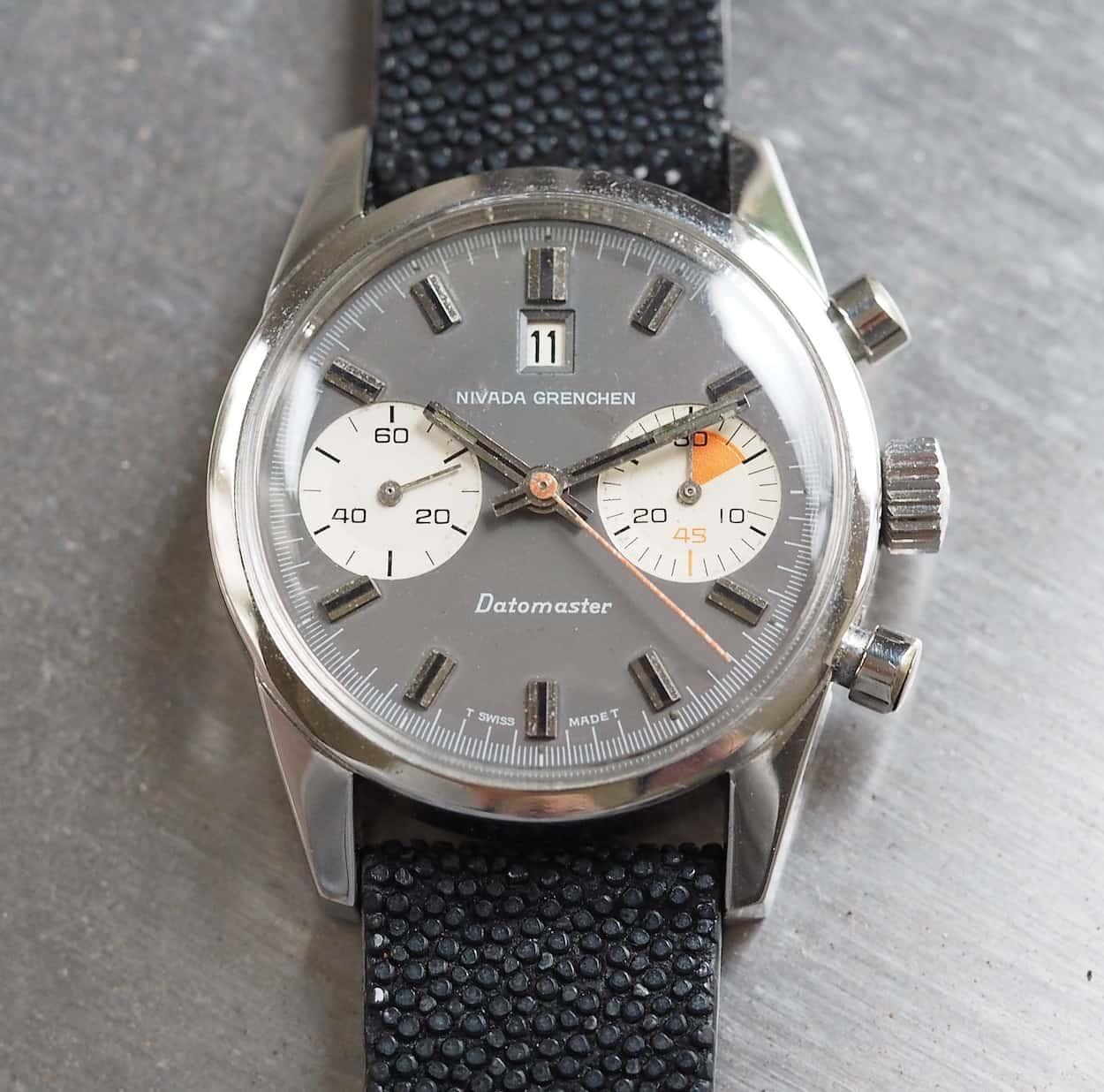
The Nivada Grenchen Datomaster features a “lowly” Landeron movement
Landeron-based pieces. I’ve featured a couple Landeron pieces within #TBT and it’s clear that this is the redheaded stepchild of vintage chronograph movements. Well, it shouldn’t be, unless durable, easily repaired and accurate movements are ripe for disdain. Of course, unless you’re looking at a rare Heuer or Nivada Dato piece, you’re likely not looking at the next massive increase in value, but you will get a legitimate vintage chronograph that boasts a movement so foolproof that it made chronographs available to the masses. Think of a Landeron 248 much like you would a Ford Model T and you’re on the right track.
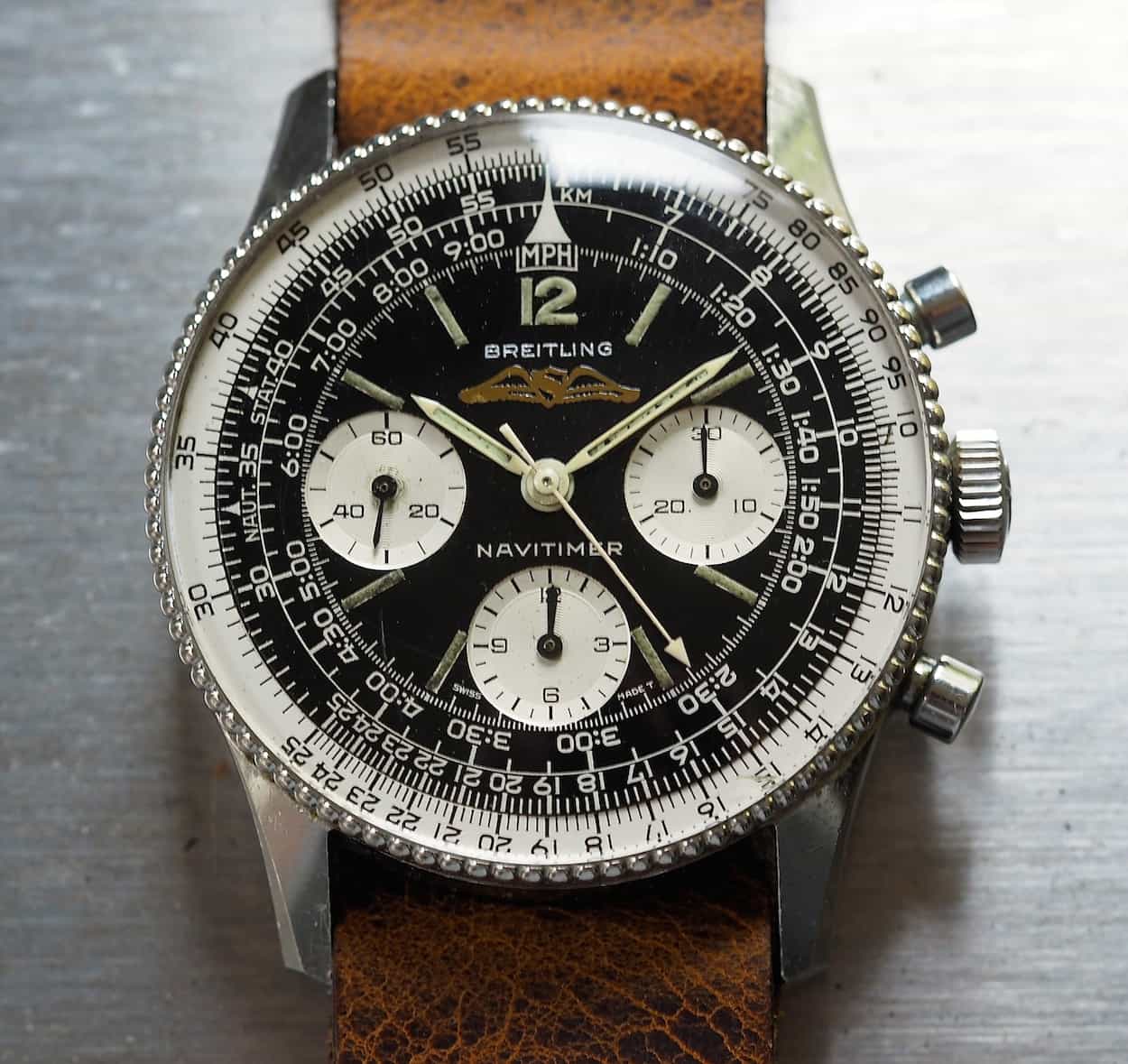
A Breitling Navitimer 806 – still one of the better deals out there
In the higher realm of vintage chronographs, you can still find 1960’s Breitling Navitimers and Cosmonautes for reasonable prices (below $4K). I don’t know why this is other than for the fact that they do take some homework to ensure the parts are correct and many have dials that have seen better days. Aside from these points, though, I think that these watches still represent the cheapest entry point for what I’d call an iconic 1950’s-60’s chronograph.
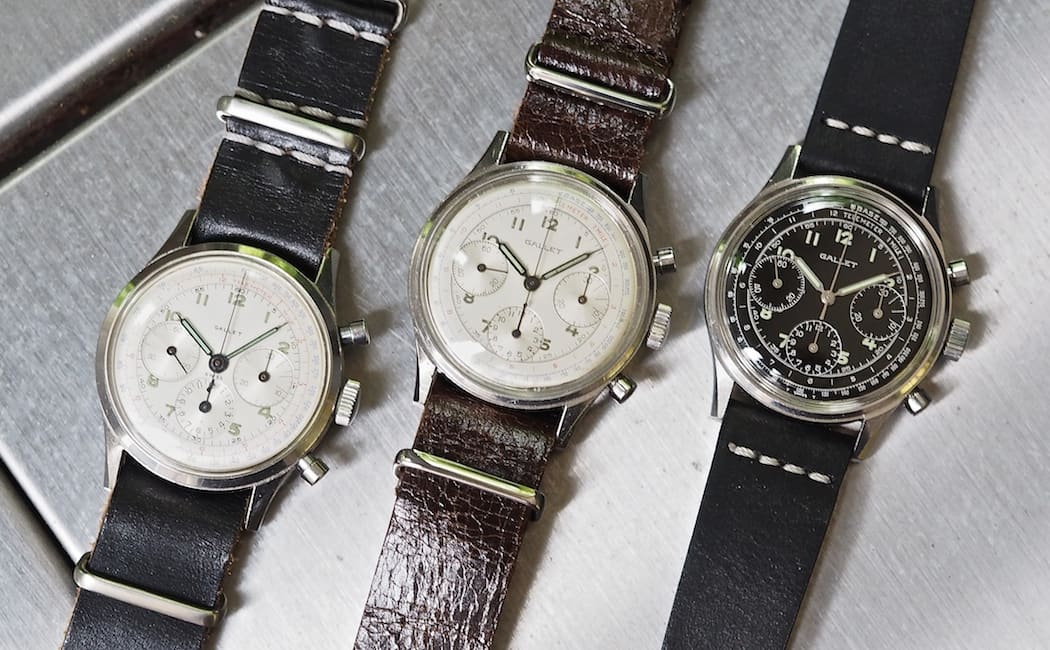
It’s tough to lose with Gallet – classic pieces like these Multichron 12’s are great examples
Similarly, I’ve preached on and on about Gallets as fantastic vintage chronographs. So have others and it seems that the market has finally taken notice as they’re suddenly not as prevalent on eBay and elsewhere. Still, good Multichron 12’s with either the Valjoux 72 or Excelsior Park 40 can be found for under $3,000 or if you’re lucky, for under $2,000. If you like a watch with all the wrist presence of a Heuer Carrera and possibly the same movement, you simply can’t go wrong here if you track down a correct example. There’s too much goodness with these and, ugh, I hate to make predictions but these will end up being an “I told you so” at some point sooner than later. For cheaper alternatives, grab a Landeron-equipped Multichron 45 and when you’re having an incredibly tough – or delightful – day, just soak up all the detail on that miraculous dial.
I hope you enjoyed this brief commentary on the current market for vintage chronographs. It’s definitely a wild scene out there right now and no one quite knows how or when it will all settle down. As mentioned, I think there’s a share of reality and a share of theatre in all this activity, but it sure makes for great watching…
For more auction watching, be sure to check out the upcoming Watches of Knightsbridge auction on July 2nd. It’s filled with all sorts of vintage chronographs.
